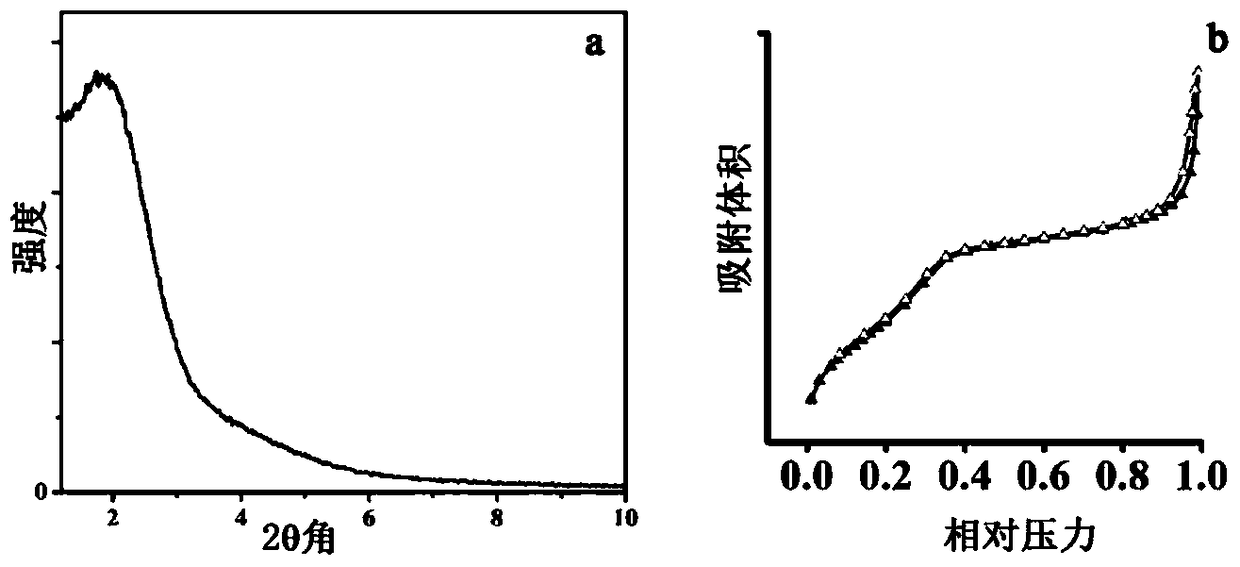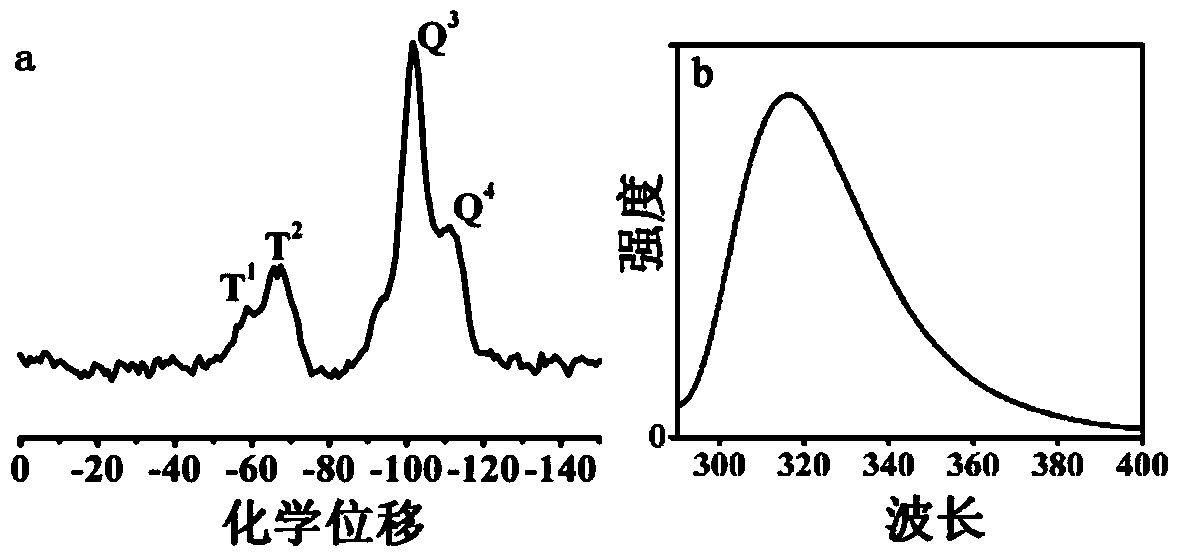Fluorescent mesoporous inorganic oxide nanoparticles with core-shell structure and preparation method thereof
A technology of inorganic oxides and nanoparticles, applied in chemical instruments and methods, dyeing organosilicon compound treatment, nanotechnology for materials and surface science, etc., can solve the difficulty of controlling and restricting the shape and particle size distribution of nanoparticles Application and development, shell structure reunion and other issues, to achieve good light absorption capacity, good fluorescence performance, easy to repeat the effect
- Summary
- Abstract
- Description
- Claims
- Application Information
AI Technical Summary
Problems solved by technology
Method used
Image
Examples
Embodiment 1~4
[0035] The core-shell fluorescent mesoporous silica nanoparticles whose cores are dense silica nanoparticles were prepared by a mild and improved Stober method. Taking the sample whose fluorophore is biphenyl as an example, the specific preparation process is as follows:
[0036] 1) Preparation of dense silicon oxide core nanoparticles: Ammonia water (2.56 mL) and tetraethyl orthosilicate (TEOS, 1.42 mL) were added into absolute ethanol (33 mL) and reacted for 24 hours. The reaction solution was centrifuged and washed several times with absolute ethanol and secondary water, and the product filter cake was collected and vacuum-dried at room temperature to obtain the target nanoparticles;
[0037] 2) Preparation of core-shell silica nanoparticles: the above-mentioned silica nanoparticle core (200mg) was suspended in a mixed solution of absolute ethanol (18mL) and secondary water (41mL), ultrasonically dispersed for 20 minutes, and ammonia water (0.7 mL), then add the pre-prepare...
Embodiment 5-7
[0042] The core-shell fluorescent mesoporous silica nanoparticles whose core is iron oxide nanoparticles are also prepared by a mild modified Stober method. Taking the sample whose fluorophore is biphenyl as an example, the specific preparation process is as follows:
[0043] 1) Preparation of dense iron oxide nanoparticles: FeCl 3 .6H 2 O (0.85g), citric acid (0.48g), and sodium acetate (1.75g) were added to ethylene glycol (30mL), stirred for several hours, transferred to a hydrothermal kettle, reacted at 200°C for 10 hours, cooled to room temperature, and obtained The black nanoparticles were washed several times with absolute ethanol and deionized water, and dispersed in ethanol.
[0044] 2) Preparation of core-shell inorganic nanoparticles: 10 mL of the ferric oxide nano particle solution prepared above was added to 30 mL of deionized water, then CTAB (40 mg) was added, ammonia water (0.2 mL), TEOS ( 100 μL) and double-headed biphenyl silicon source (10 μL). After react...
PUM
| Property | Measurement | Unit |
|---|---|---|
| particle diameter | aaaaa | aaaaa |
Abstract
Description
Claims
Application Information
 Login to View More
Login to View More - R&D Engineer
- R&D Manager
- IP Professional
- Industry Leading Data Capabilities
- Powerful AI technology
- Patent DNA Extraction
Browse by: Latest US Patents, China's latest patents, Technical Efficacy Thesaurus, Application Domain, Technology Topic, Popular Technical Reports.
© 2024 PatSnap. All rights reserved.Legal|Privacy policy|Modern Slavery Act Transparency Statement|Sitemap|About US| Contact US: help@patsnap.com










